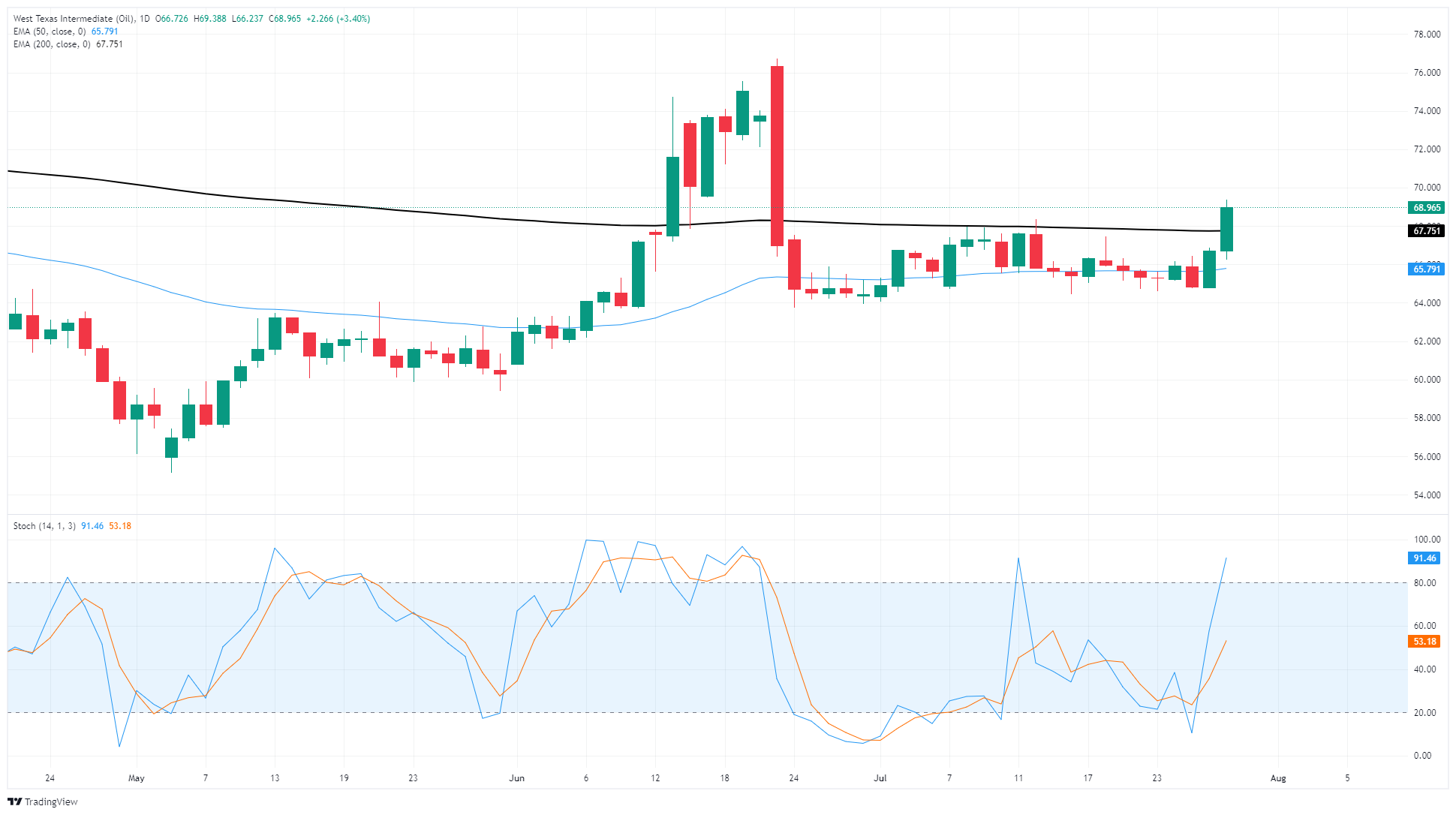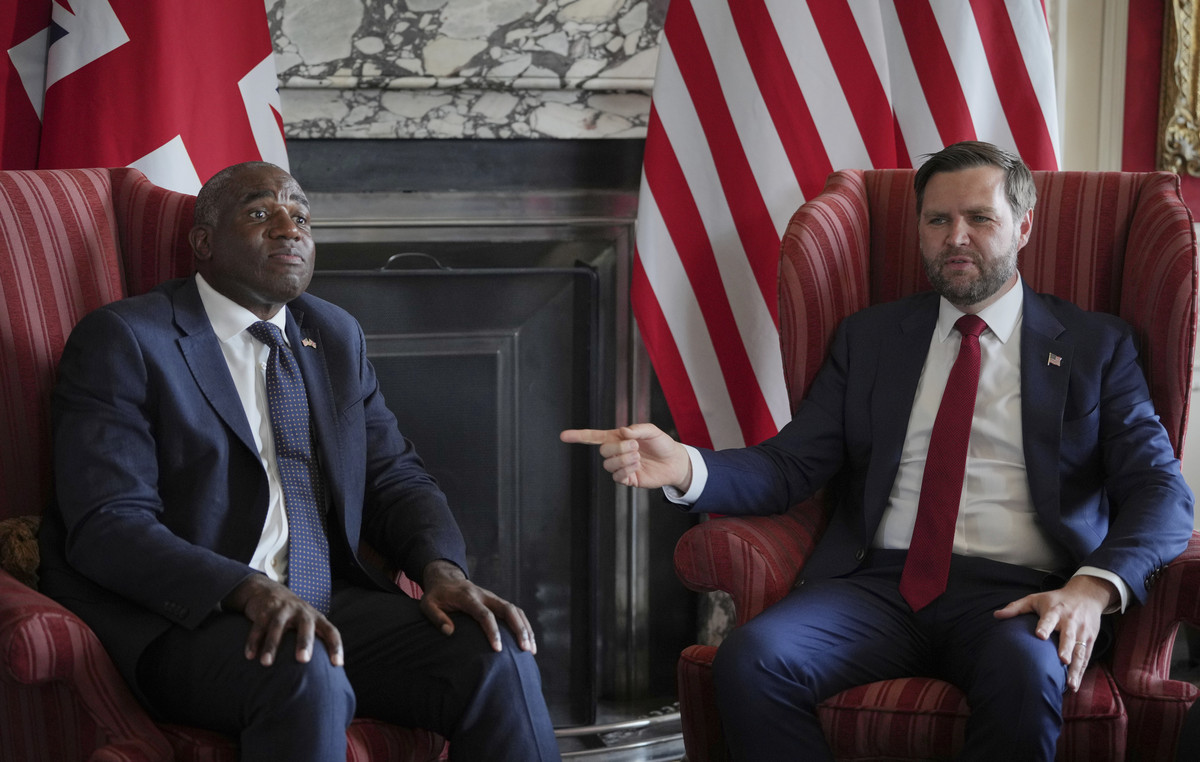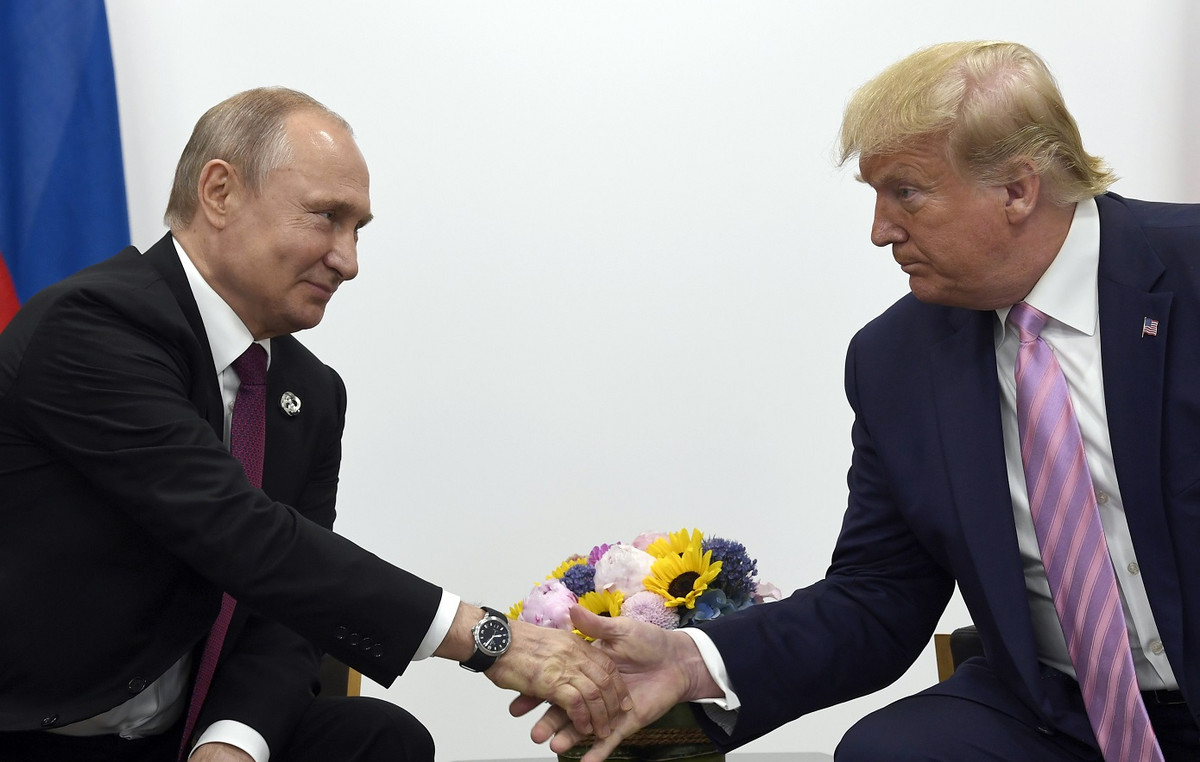- The president of the United States Donald Trump gave Russia ten days to reach an agreement with Ukraine.
- If Russia does not collaborate, Trump is threatening with new sanctions on Russian crude oil.
- Secondary tariffs are on the table, since Trump threatens to go after anyone who buys Russian barrels.
The West Texas Intermediate (WTI) crude oil (WTI) of the US rose to its fastest rate in a single day in more than a month after the US president Donald Trump announced that he is giving Russia only ten days to reach an acceptable resolution on Ukraine, or face hard economic sanctions and penalties. The Trump administration is threatening to impose severe tariffs secondary to any country that bought Russian crude oil assets if an agreement is not reached in the next ten days.
WTI crude oil is back over $ 69.00 per barrel for the first time since the end of June, going up more than 3.5% only on Tuesday. The WTI has risen 7% of minimum to maximum in a period of two days, since the Trump team intensifies its hard speech against the Russian regime. Donald Trump has begun to express frustration towards Russian President Vladimir Putin, since the lack of sincere peace conversations of Putin with Ukraine hinders Donald Trump’s ability to fulfill his campaign promises to set up decisively to the war in Ukraine.
The Russian invasion at Ukrainian borders has been in progress for 1,251 days and counting. The Russian government initially hoped that all “military exercise” would not take more than three days, but the Russian army has so far fought, if it has not completely failed, to overcome a country that is approximately one third of the size of Russia.
WTI price forecast
With severe commercial penalties on the agenda for energy markets, the WTI has jumped to a new price band just above the 200 -day exponential mobile average (EMA) about 68.15 $. The price action has exceeded the key mobile average for the first time in more than a month, and the price action is directed again at 70.00/BBL.
WTI DAILY GRAPH

WTI oil – frequent questions
WTI oil is a type of crude oil that is sold in international markets. WTI are the acronym of West Texas Intermediate, one of the three main types that include the Brent and Dubai’s crude. The WTI is also known as “light” and “sweet” by its relatively low gravity and sulfur content, respectively. It is considered high quality oil that is easily refined. It is obtained in the United States and is distributed through the Cushing Center, considered “the crossing of the world.” It is a reference for the oil market and the price of WTI is frequently traded in the media.
Like all assets, supply and demand are the main factors that determine the price of WTI oil. As such, global growth can be a driver of the increase in demand and vice versa in the case of weak global growth. Political instability, wars and sanctions can alter the offer and have an impact on prices. OPEC decisions, a group of large oil -producing countries, is another key price factor. The value of the US dollar influences the price of WTI crude oil, since oil is mainly traded in US dollars, so a weaker dollar can make oil more affordable and vice versa.
Weekly reports on oil inventories published by the American Petroleum Institute (API) and the Energy Information Agency (EIA) influence the price of WTI oil. Changes in inventories reflect the fluctuation of supply and demand. If the data show a decrease in inventories, it can indicate an increase in demand, which would raise the price of oil. An increase in inventories may reflect an increase in supply, which makes prices lower. The API report is published every Tuesday and that of the EIA the next day. Their results are usually similar, with a 1% difference between them 75% of the time. EIA data is considered more reliable, since it is a government agency.
The OPEC (Organization of Petroleum Exporting Countries) is a group of 13 nations oil producing that collectively decide the production quotas of member countries in biannual meetings. Their decisions usually influence WTI oil prices. When OPEC decides to reduce fees, it can restrict the supply and raise oil prices. When OPEC increases production, the opposite effect occurs. The OPEC+ is an expanded group that includes another ten non -members of the OPEC, among which Russia stands out.
Source: Fx Street
I am Joshua Winder, a senior-level journalist and editor at World Stock Market. I specialize in covering news related to the stock market and economic trends. With more than 8 years of experience in this field, I have become an expert in financial reporting.







